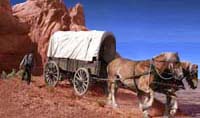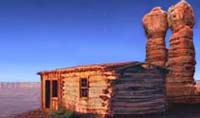|
|  |
 Click on the map numbers or the discription below to load site gallery.
Click on the map numbers or the discription below to load site gallery. |
|
|
|
| |
Site 6, The Hole-in-the-Rock Crevice
A natural crevice in the west wall of the 1300' deep Colorado River gorge which was widened by the San Juan pioneers to accommodate a wagon road down to the Colorado River. For six weeks during the harsh winter of 1879/80, the pioneers exercised ingenuity and great determination in building their road through the river gorge. |
|
|
Scroll down to view full gallery. |
|
Video Clips - click to load viewer |
| |
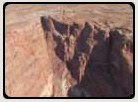
Hole-in-the-Rock
east facing |
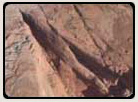
Crevice face
down facing
|
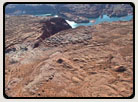
Crevice face
down facing
|
|
Image submittals are welcome! We are particularly interested in photos prior to Lake Powell. Click on "Contact Us" for details.
|
|  |
The Hole-in-the-Rock Foundation Preserving the History and Sharing the Legacy
..nearly scared me to death..
“It is about a mile from the top down to the river and it is almost straight down, the cliffs on each side are five hundred feet high and there is just enough room for a wagon to go down. It nearly scared me to death.”
Elizabeth Decker, February 22, 1880
|

